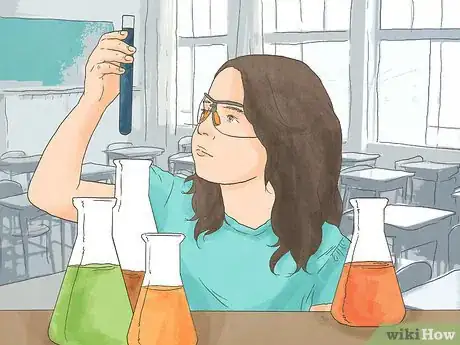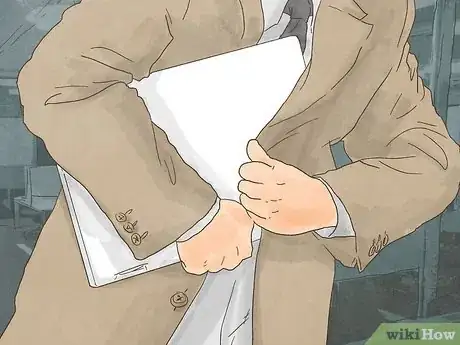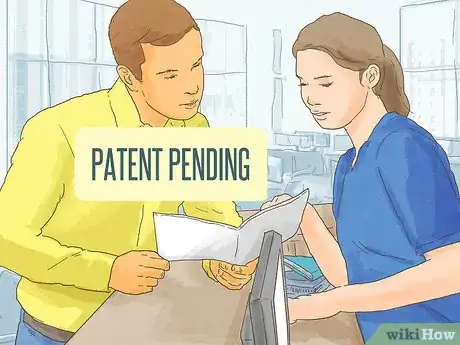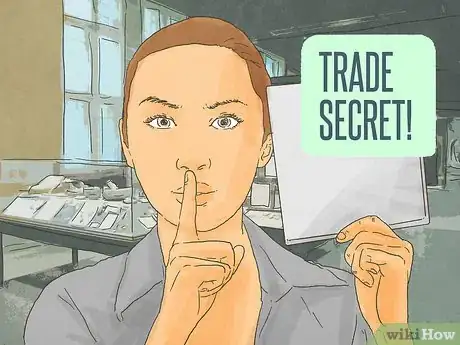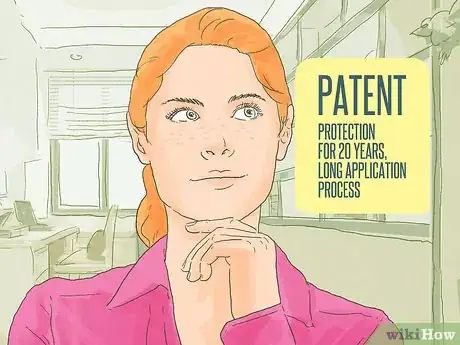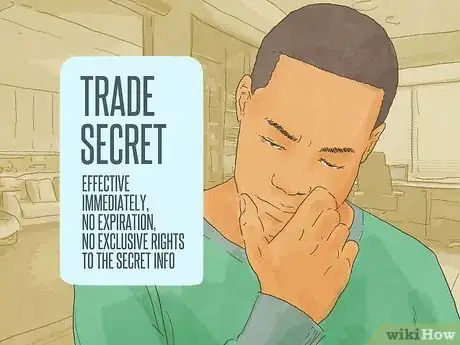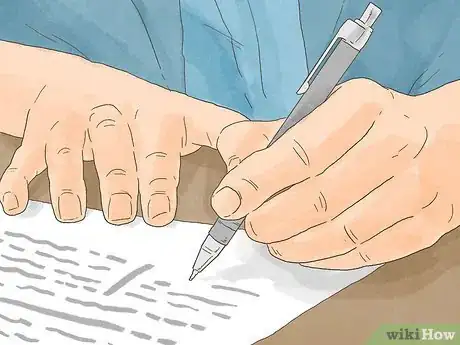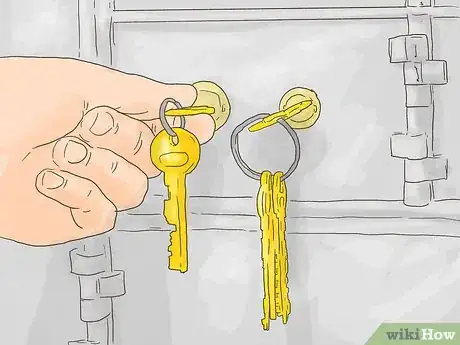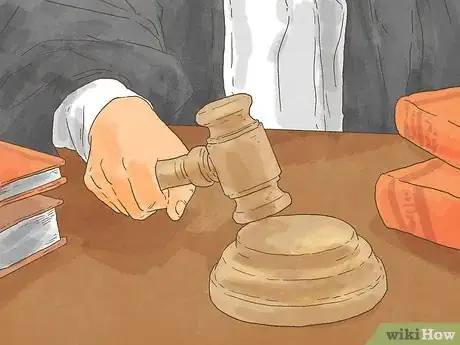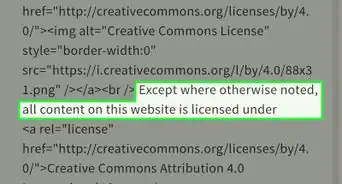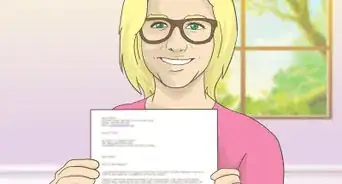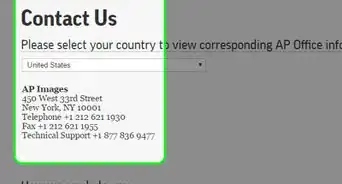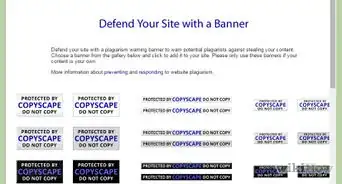This article was co-authored by Clinton M. Sandvick, JD, PhD. Clinton M. Sandvick worked as a civil litigator in California for over 7 years. He received his JD from the University of Wisconsin-Madison in 1998 and his PhD in American History from the University of Oregon in 2013.
There are 16 references cited in this article, which can be found at the bottom of the page.
wikiHow marks an article as reader-approved once it receives enough positive feedback. This article received 12 testimonials and 86% of readers who voted found it helpful, earning it our reader-approved status.
This article has been viewed 147,501 times.
The United States Constitution allows inventors to obtain patent protection for scientific and technical inventions.[1] Having a patent on an invention means an inventor can exclude others from making, using, or selling that invention for a limited time.[2] But what if you have an idea and you’re not sure getting a patent is the right way to proceed? Fortunately, there are other options available for protecting ideas and inventions, including holding information as a trade secret. Often companies or individuals consider this option if the invention may have a long term impact or value since patents have a finite life and the knowledge thereafter becomes public domain.[3]
Steps
Deciding How Best to Protect Your Idea
-
1Identify the subject matter of your idea. Not every idea is protectable under the law, and you should know exactly what you’re trying to protect before you decide how to proceed. For example, is your idea to open a donut shop? That idea will not be protectable under the law, though you can certainly take steps to keep it secret from your competitors by not telling anyone about your plans. On the other hand, is your idea a specific formula for a new kind of donut icing? That’s the kind of idea that can be protected under the law.
-
2Determine the extent to which you need to protect your idea. Do you plan to keep your idea secret from everyone else in the world? Or, as in the donut icing example, are you hoping to keep the secret just from your business competitors? Do you want your idea to stay secret forever, or would a limited time suit your needs? These are important considerations in deciding what kind of protection you want to pursue.Advertisement
-
3Patent your invention. Under the U.S. patent laws, any person who “invents or discovers any new and useful process, machine, manufacture, or composition of matter, or any new and useful improvement thereof, may obtain a patent.” [4] Ideas alone cannot be patented: one of the requirements for obtaining a patent is to provide a complete description and diagramming of the process, machine, etc. sought to be patented. [5]
- If your invention qualifies for patent protection, you can file an application with the United States Patent and Trademark Office (PTO).[6]
- A PTO employee (known as an examiner) will consider your application to determine whether your invention is new and non-obvious as compared to prior inventions.
- If the examiner determines that you should receive a patent, you will have the exclusive right to make, use, or sell the invention for 20 years from the date you filed the application.
- You can then sue others in federal court for patent infringement if you discover they are making use of your patented invention without your permission.
- If your invention qualifies for patent protection, you can file an application with the United States Patent and Trademark Office (PTO).[6]
-
4File a provisional patent application. This is a much less detailed filing with a much lower filing fee ($260 as of December 2014). The provisional application is good for up to 12 months, or until you file a formal (or non-provisional) application to replace it. A provisional application allows you to “hold” the date of your invention while you decide whether you want to formally apply for a patent. [7]
- If you do eventually file a formal application and there is any question as to the date of invention (if the examiner suspects someone else came up with the invention before you), the invention date will “relate back” to the provisional application, which may be as much as a year earlier.
- You cannot renew a provisional application after the 12-month period expires. If you decide not to proceed with a formal patent application, the provisional application will be considered "abandoned" after the 12-month period.
-
5Determine whether your idea qualifies for trade secret protection. If you decide that your invention does not qualify for patent protection (or you elect not to apply for a patent for any other reason), your idea or invention may still be protectable under trade secret law.
- Trade secrets cover a much broader spectrum of inventions than patents. They can include formulas, patterns, compilations, programs, devices, methods, techniques, and processes.
- The most well-known example of a trade secret is Coca-Cola’s formula. For the past ninety years, Coca-Cola has kept its formula top secret. It has never patented its formula, because that would mean the formula would have been made public after a number of years. Coca-Cola maintains a competitive advantage by keeping its formula secret.
-
6Consider the advantages and disadvantages of patent protection. Both types of intellectual property provide certain potential benefits and drawbacks, so be sure to consider all the information before deciding which route to take. Advantages and disadvantages of patents include:[8]
- A patent gives you the ability to exclude others from making, using, or selling your invention for 20 years.
- Anyone seeking to use your invention during that time must get your permission, and this often includes entering into a license agreement for which the other party will pay you. The prospect of lucrative license agreements may be very attractive to other companies that wish to merge or acquire your company.
- The patent application process often takes a long time (often several years).
- Many patent applications are never granted.
- Patent application fees are substantial, and you will likely need to pay a patent attorney to properly prepare your application, which must include a detailed description and diagrams of your invention.
- With few exceptions, patent applications are required to be published 18 months after they are filed. [9]
- After 20 years, the patent expires, which means anyone can make, use, or sell the invention.
-
7Compare the advantages and disadvantages of trade secret protection. Once you consider the potential benefits or shortfalls of patent protection, think about the advantages and disadvantages of trade secrets. These include:
- You don’t have to file any documents or pay any money to acquire trade secret protection.
- Trade secret protection takes effect immediately, and it never expires (unless the information is disclosed to the public).
- You can sue a wrongdoer for trade secret misappropriation, and that suit can be brought in state court, which often moves faster than federal court.
- You have no exclusive rights to the secret information. Another person can independently develop the idea or reverse engineer your product, and they cannot be held accountable under the law.
- If you later decide to patent the invention, you must apply for the patent within one year of coming up with the complete idea. Therefore, you cannot hold information as trade secret for longer than a year if you intend to eventually patent it [10]
Taking Precautionary Measures
-
1Limit the number of people who know the secret. If you decide to pursue trade secret protection, you should carefully assess how many people other than you already know the secret, and figure out how many more will need to know it. The more people who know the secret, the more likely it is that one or more of them might disclose it to others. Also make sure that those who already have the secret information (and those you plan to give it to) know the importance of keeping the information secret.[11]
-
2Forbid public use of your idea. Allowing the public to use or add to your idea before you patent the invention may preclude you from getting a patent, if you eventually decide to go that route. It may also prevent you from claiming the idea is a trade secret. [12]
-
3Require confidentiality agreements in employment contracts. If your business involves a trade secret, you should require new employees who will have access to the secret information to sign a confidentiality agreement as part of their employment contract. An attorney can assist you with crafting the proper language. [13]
-
4Sign non-disclosure agreements with business partners. If you will need to disclose the trade secret information during discussions with other companies, you should require those companies to sign non-disclosure agreements (NDAs) before the disclosure. These contracts are standard in business, and while the other company may ask to negotiate the terms, few companies will refuse outright to sign them. NDAs tend to expire after a certain time period, so make sure you are comfortable with that. Again, an attorney can help you draft the NDA and may help you negotiate them with the other company. [14]
- If another company does refuse to sign an NDA, you should obtain another form of protection for your trade secret (such as a provisional patent application) before disclosing the information. Unfortunately, if you disclose the trade secret information without any protection in place, the other company can use that information, and may even apply for its own patent on that information.
-
5
Enforcing Your Trade Secret Rights
-
1Investigate possible trade secret misappropriation. If you hear of a competitor who appears to be using your trade secret information, you should gather as much information about that use as you can. Going back to the donut icing example, if you hear of a rival donut shop making a new icing, you can buy one of their donuts and attempt to reverse engineer their icing to determine if they appear to be using your formula.
-
2Ensure your idea qualifies as a trade secret under the law. If you determine that the rival donut shop is making an icing identical to your icing and you want to enforce your trade secret rights against that shop, the first thing you’ll need to prove is that your icing is, in fact, a trade secret. Factors considered by courts include the following: [17]
- The extent to which the information is known outside of your company.
- The extent to which the information is known by your employees and others in your business.
- Measures you took to guard secrecy.
- The value of the information to you and your competitors.
- The amount of effort or money you expended to develop the information.
- How easily the information could be acquired or duplicated by others.
-
3Prove all the elements of a trade secret claim. Once you’ve determined that your information qualifies as a trade secret, you also need to show the court that you took reasonable precautions to protect the information from disclosure, and that the information was misappropriated. [18]
- Under the law, misappropriation generally means someone acquired the information through improper means or an employee breached his/her confidentiality obligation. Using the donut shop example, the rival shop could be held liable for trade secret misappropriation if you could show that the rival owner broke into your shop after hours and stole the written formula from your locked filing cabinet.
- Misappropriation does not apply in certain situations
- Where a trade secret is inadvertently disclosed (if your donut icing recipe fell out of your pocket and your competitor picked it up)
- If a competitor reverse engineers a trade secret (if your competitor bought one of your donuts and attempted to recreate your icing by tasting your product)
- If a competitor makes an independent discovery (if your competitor coincidentally managed to stumble on a donut icing recipe that is identical to yours).
-
4Bring legal action. Typically, you should talk to your competitor and see if you can resolve your differences informally before involving the courts. But if you decide you need to file suit to enforce your trade secret rights, you can consider bringing the following claims:
- 47 states and the District of Columbia (New York, North Carolina, and Massachusetts are the exceptions) follow the Uniform Trade Secrets Act (UTSA). UTSA is a standardized statute spelling out the law of trade secret misappropriation. That means formulating a misappropriation claim depends less on your own state’s law and more on the facts of your specific case.
- Depending on your situation and your state of residence, you may be able to include claims for breach of contract (if one of your employees breached their confidentiality agreement by providing the donut icing recipe to a competitor, for example), unfair competition (if your donut shop rival advertised that his shop is the only one selling donuts with the unique icing), etc. [19]
-
5Weigh the risks and benefits of a lawsuit. If you prevail on a misappropriation claim, you may be entitled to an injunction (preventing your competitor from continuing to use the trade secret information), a gag order (preventing the defendant from disclosing the trade secret information), monetary damages, court costs, and attorney’s fees. [20]
- However, If you do not prevail, the court may require you to pay the other side’s costs and fees, along with your own. [21]
- Attorney's fees for taking a trade secret misappropriation case to trial can take years and cost tens of thousands of dollars or more.
References
- ↑ http://www.bitlaw.com/patent/
- ↑ https://www.law.cornell.edu/uscode/text/35/271
- ↑ https://www.wipo.int/tradesecrets/en/
- ↑ http://www.uspto.gov/patents-getting-started/general-information-concerning-patents#heading-4
- ↑ http://www.ipwatchdog.com/2014/02/15/protecting-ideas-can-ideas-be-protected-or-patented/id=48009/
- ↑ http://www.uspto.gov/patents-getting-started/patent-process-overview#step1
- ↑ http://www.uspto.gov/patents-getting-started/patent-basics/types-patent-applications/provisional-application-patent
- ↑ http://www.uspto.gov/patents-getting-started/patent-process-overview#step1
- ↑ http://www.uspto.gov/web/offices/pac/mpep/s1120.html
- ↑ http://www.uspto.gov/web/offices/pac/mpep/s2133.html
- ↑ http://www.cio.com/article/2431057/risk-management/how-to-guard-your-trade-secrets--and-why-you-must-.html
- ↑ http://www.cio.com/article/2431057/risk-management/how-to-guard-your-trade-secrets--and-why-you-must-.html
- ↑ http://www.cio.com/article/2431057/risk-management/how-to-guard-your-trade-secrets--and-why-you-must-.html
- ↑ http://www.cio.com/article/2431057/risk-management/how-to-guard-your-trade-secrets--and-why-you-must-.html
- ↑ http://www.cio.com/article/2431057/risk-management/how-to-guard-your-trade-secrets--and-why-you-must-.html
- ↑ https://www.wipo.int/tradesecrets/en/
- ↑ www.law.cornell.edu/wex/trade_secret
- ↑ www.law.cornell.edu/wex/trade_secret
- ↑ https://www.law.cornell.edu/wex/unfair_competition
- ↑ http://www.dmlp.org/legal-guide/basics-trade-secret-claim
- ↑ http://www.dmlp.org/legal-guide/basics-trade-secret-claim
- ↑ http://www.uspto.gov/trademarks-getting-started/trademark-process
- ↑ http://copyright.gov/
- ↑ 17 USC § 411 https://www.copyright.gov/title17/92chap4.html#411
About This Article
To protect your ideas without a patent, see if you qualify for trade secret protection from the court, which covers a broader spectrum of inventions than patents including programs and processes. Instead of having to file any documents, you can get trade secret protection by simply keeping your information secret. For example, you can limit how many people you tell about your idea and forbid public use of your idea. You can also get your employees to sign a confidentiality agreement and your business partners to sign non-disclosure agreements as an additional precautionary measure. For more information from our Legal co-author, including how to prove that your idea is a trade secret, read on!
